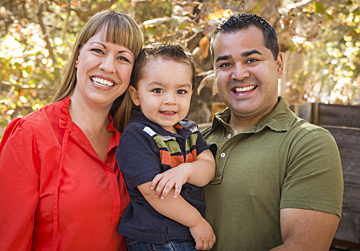How Would You Like to Increase Your Market Share by 15% or More?
Remember the days when there were 3 major television networks – ABC, NBC and CBS? Needless to say, there are many more television networks these days of cable and satellite TV, and the “Big Three” no longer dominate the market. In fact, can you name the fourth largest TV network in prime-time ratings? It is Univision, the Spanish language television network. (In case you are wondering, the Top 5 Networks, in order, are now CBS, Fox, ABC, Univision, and NBC.)
According to Wikipedia, Hispanics and Latinos now comprise 16.7% of the population in the United States. Of these, 90% speak English, 78% speak Spanish, 69% are bi-lingual (Spanish and English), 22% speak only English, and 9% speak only Spanish. Are you reaching out to this vast market, or are you simply following an outmoded and incorrect stereotype that says that Hispanics and Latinos are not part of your customer base?

Most small businesses work on very small margins, and incremental increases in income can make the difference between profit or loss. Factors such as additional retail sales in your store, extended stays, lower credit card processing fees, propane fills, and firewood sales all come into play and have a cumulative effect; however, these shy in comparison to the potential of an overall increase in market share.
For several years now, my company has been building French language versions of websites for Northeastern clients with businesses located in destination areas that consistently draw significant percentages of French Canadian vacation traffic. Those clients have frequently been complimented by their French Canadian customers, thanking them for providing a French language version of their website that was thoughtfully created, carefully translated, and contained full content. One of the comments that was shared with us earlier in the year (accompanying a reservation that was made with one of our campground clients) read, “Thank you for your French site. It’s the first time that we see this quality of French language out(side) of Quebec, whether it was on menus in restaurants or on web sites. Nice work and nice attention.” The message that is conveyed to customers says “we want your business and we care about your business”.
We all make buying decisions that are based upon purchasing products and doing business with companies that lie within our personal comfort zones. Those comfort zones may be defined within a variety of standards, and they are particularly crucial when you are trying to persuade a group of people to try something new. What better way could there be to communicate with new customers than for your marketing to speak their language?
In the case of the French Canadian market, the need generally applies to businesses within driving distance of Quebec, in historical destination markets (such as Old Orchard Beach, ME; Hampton Beach, NH; Cape Cod, MA; The Wildwoods and Cape May, NJ; Ocean City, MD; and Virginia Beach, VA), or that are conducting online commerce and seeking out that market. In the case of the Hispanic and Latino markets, there are no regional limitations. If you are running a business in the United States today, you need to be reaching out to these vast and growing populations in the language that represents their comfort zone.
The skeptics – or dare I say the ignorant – like to say that Hispanics, Latinos, and other demographic groups simply do not camp. My response is that these are people who have simply not been sent the invitation to engage in the experience. One fact is certain: They are not camping with your competitors, giving you the opportunity to introduce them to camping and to essentially define the experience.
Think of automobile manufacturers 10 or 20 years ago who viewed the market in China as nothing more than a nation of people who did not drive cars. Did that mean that the Chinese middle class did not want to own vehicles, or did it mean that the biggest demand in automotive history was ready to flourish? In hindsight, we all know the answer, and the companies that have successfully tapped into this market are doing so in their new customers’ native language, using marketing messages that are consistent with their native culture.
Your new markets are much closer to home. Speak their language.
This post was written by Peter Pelland

May 24th, 2013 at 4:59 PM
I have found your research to be overwhelmingly true. In our case, near the border of Mexico, rather than Canada, we find that even a stumbling through our limited use of the Spanish language when we reserve or welcome our guests, impresses upon then our desire to cater to them. Although I haven’t found an app or widget to do this on my website-on my blogger blog there is a translation widget that translates the whole site into a number of languages. I chose Spanish and French. I am sure the translation is not perfect but have received comments from viewers of my blog mentioning their appreciation for the option.
I also find, that in our case, that Hispanic/Latino families LOVE to camp. I will say that my experience is that tent camping is more the style of choice for our locals in San Antonio but more and more we are seeing growth in the RV industry. The Hispanic people have a very family oriented and party oriented culture. Although our park is now only an RV park, in the past when we were in the “tenting” biz, there was seldom a word spoken in English here. Not that our San Antonians don’t speak English, they just prefer to maintain their culture and language in their families. I still have a loyal following of Hispanic RVers who come in large family groups and are an interesting and enjoyable niche for us at HV.
Just wanted to express my agreement with the idea of appealing to travelers by using their native tongue.